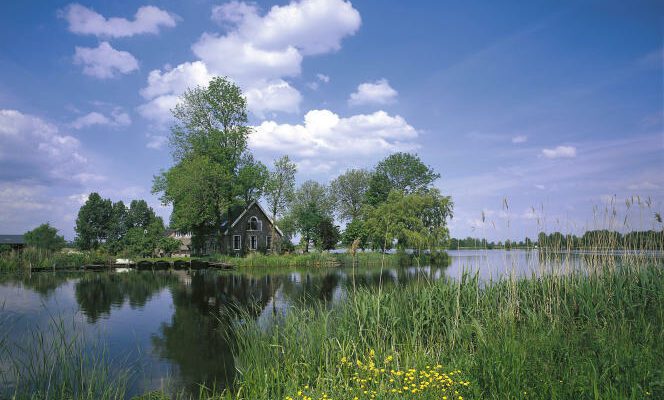Everyone is probably able to recognize a Mondrian: a juxtaposition of squares and red, yellow or blue rectangles, separated by black lines drawn with chalk, painted by this dead artist, in 1944 in New York. Some facetious amateurs even pride themselves on drawing colored quadrilaterals and displaying them in their living room. Because Piet Mondrian is sometimes misunderstood. At the Kunstsammlung museum in Düsseldorf (Germany), the curator of an exhibition discovered last fall that a work entitled New York City 1 had been hanging upside down since 1941…
We know less that the artist, a major figure in modern art, began at the very beginning of the 20e century, by painting sweet landscapes, trees, rivers and mills, in the quiet Dutch countryside. AT Abcoude, a locality in the province of Utrecht now overtaken by the agglomeration of Amsterdam, the photographer Nienke Meek, passionate about art, recounts this little-known episode.
Student at the Academy of Fine Arts in Amsterdam, Pieter Cornelis Mondriaan, who was not yet called Piet Mondrian, “dreamed of making money doing portraits, but he wasn’t very good at it. On the advice of a friend, he converted to landscapes, took the train with his easel and got off at the first station, Abcoude », says the photographer. At the same time, Parisian artists seized, after a short journey by train, the light and the sparkles of the Seine at Saint-Germain-en-Laye or Vésinet.
The old Abcoude station, an elegant white building, has been transformed into a hotel. At this point the “Mondrian route” begins, which Nienke Meek makes you visit by bike or on foot, along the Gein. In the middle of cultivated plots, impeccably aligned, this small river lined with weeping willows and covered with water lilies offers a rural landscape. Well-to-do families in Amsterdam had become accustomed, with the railway, to spending the summer in red-brick houses, which were both austere and welcoming. Imposing mills with wide wings, which the Dutch have been making since the end of the Middle Ages to pump water from the polders, complete the panorama.
Mobile easel, on wheels
In 1902, in the Netherlands, we already traveled by bicycle. The young painter had transformed his into a mobile easel, stabilized with crutches. Sitting on the saddle, he sketched sketches before returning to his studio to paint the colours. “He suppressed the details, played with the lights. Rather than representing reality, he preferred to express his emotions through painting.says Nienke Meek, showing representations of the paintings in a small notebook.
You have 49.89% of this article left to read. The following is for subscribers only.
